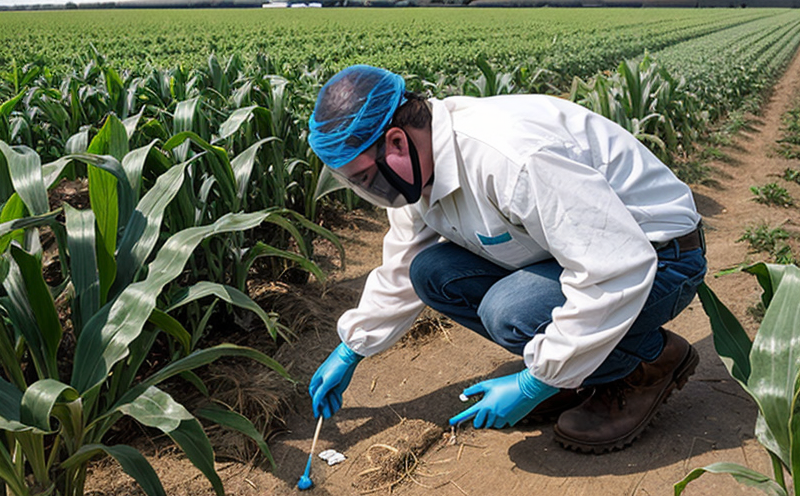Emamectin Benzoate Residue Testing
The testing of pesticides like emamectin benzoate residues in crops is essential for ensuring food safety, regulatory compliance, and environmental sustainability. Emamectin benzoate is a potent insecticide used widely in agriculture to control pests such as mites, flies, and other insects harmful to crops. Proper residue testing ensures that the produce meets international standards set by organizations like the World Health Organization (WHO), Food and Agriculture Organization of the United Nations (FAO), and the European Commission.
Our laboratory specializes in emamectin benzoate residue analysis using advanced chromatographic techniques including Liquid Chromatography-Mass Spectrometry (LC-MS/MS). This method provides high sensitivity, selectivity, and accuracy, enabling detection of even trace amounts of residues. Our process involves thorough sample preparation to ensure accurate results.
Sample preparation typically includes extraction from the crop matrix using solvents followed by cleanup steps such as solid-phase extraction or liquid-liquid partitioning. The purified extract is then injected into an LC-MS/MS system for analysis. Chromatographic separation ensures that emamectin benzoate is isolated from other compounds in the sample, allowing for precise quantification.
The detection limit of our method is 0.1 ppb (parts per billion), which meets or exceeds international standards such as ISO 3696:2015 and AOAC International methods. This level ensures that even very low concentrations do not go undetected, maintaining high standards in food safety.
Reporting of results is comprehensive, including a detailed methodology section describing the sample preparation, instrumentation used, and any quality control measures taken during analysis. Quantitative data are provided along with a statement regarding compliance or non-compliance with relevant regulatory limits set by authorities like the European Union’s Maximum Residue Levels (MRLs).
By offering this service, we aim to support our clients in maintaining product integrity while complying with stringent regulations governing pesticide use.
Why It Matters
- To ensure food safety by detecting and quantifying residues that could potentially pose health risks if consumed in excess amounts.
- To comply with international standards set forth by organizations such as WHO, FAO, and the European Commission.
- To protect public health from adverse effects of consuming crops treated with harmful pesticides beyond recommended limits.
Our testing helps producers meet these stringent requirements, ensuring their products are safe for consumers worldwide. Compliance with regulations not only protects consumer health but also supports sustainable agriculture practices and maintains market access for agricultural products.
Applied Standards
The testing of emamectin benzoate residues follows several internationally recognized standards including:
- ISO 3696:2015
- AOAC Official Method 2015.08
- MRLs established by the European Commission
These standards provide consistent guidelines for sample preparation, instrumental analysis, and reporting of results ensuring accurate and reliable data.
Industry Applications
| Application | Description |
|---|---|
| Crop Quality Assurance | Ensuring that crops meet strict quality standards before being brought to market. |
| Regulatory Compliance | Meeting international regulations regarding permissible levels of pesticides in food products. |
| R&D Support | Aiding research and development efforts aimed at optimizing pesticide application methods. |
In addition to these applications, our expertise extends to supporting the agriculture sector by providing data that can inform best practices in pest management. This helps farmers adopt sustainable farming techniques which ultimately benefit both the environment and human health.
- Supporting sustainable farming methods: By identifying optimal times for pesticide application based on residue levels, we help minimize unnecessary applications.
- Improving crop yields: Understanding how residues behave over time allows us to advise growers on strategies that enhance yield while reducing risk.





